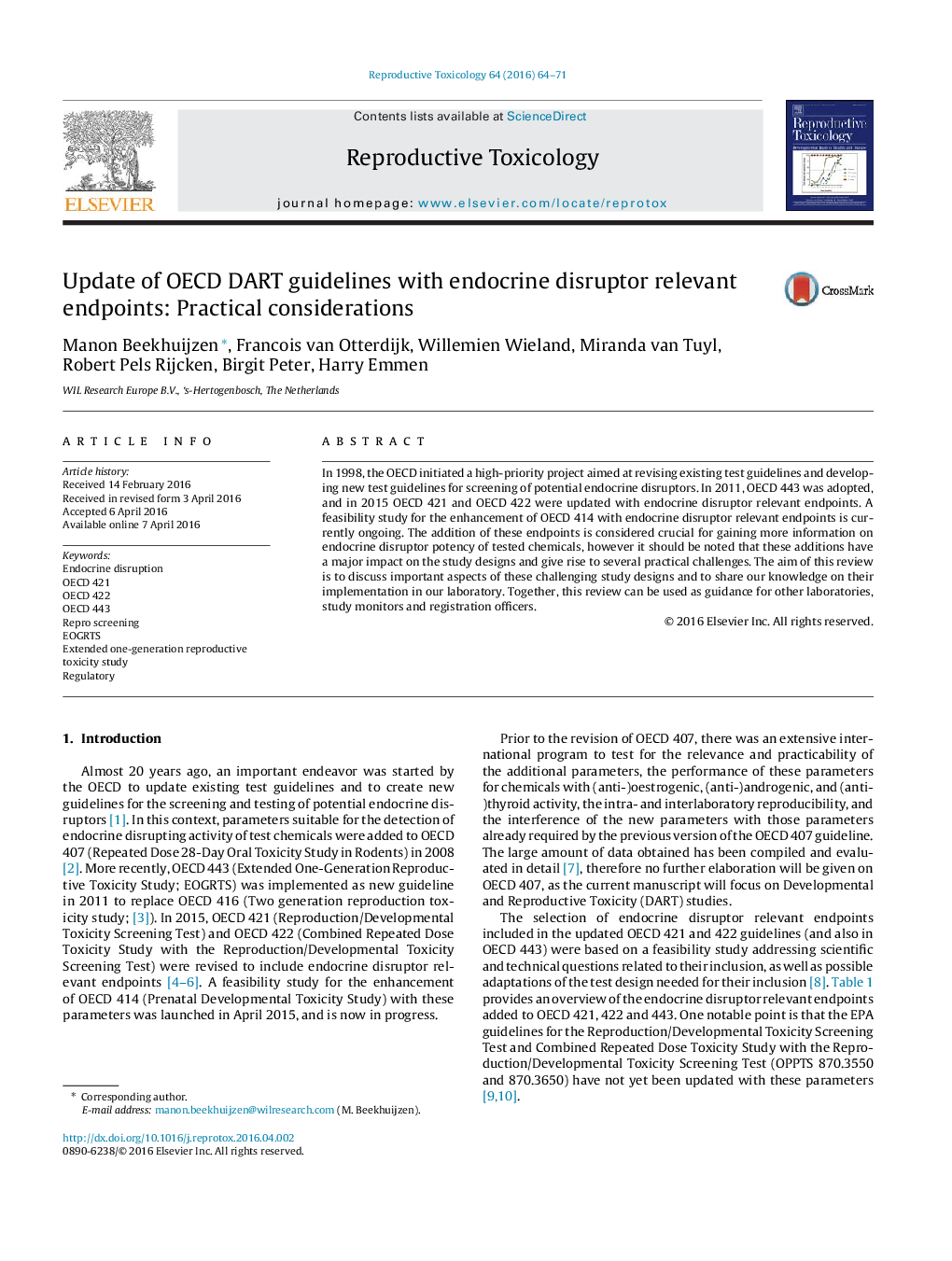| Article ID | Journal | Published Year | Pages | File Type |
|---|---|---|---|---|
| 2593297 | Reproductive Toxicology | 2016 | 8 Pages |
•Update of OECD 414, 421, 422 and 443 with endocrine disruptor relevant endpoints.•Topics include legislation, practical aspects and important considerations.•Shortcomings in new OECD 421 and 422 are highlighted and improvements provided.•Can be used as guidance for other labs, study monitors and registration officers.
In 1998, the OECD initiated a high-priority project aimed at revising existing test guidelines and developing new test guidelines for screening of potential endocrine disruptors. In 2011, OECD 443 was adopted, and in 2015 OECD 421 and OECD 422 were updated with endocrine disruptor relevant endpoints. A feasibility study for the enhancement of OECD 414 with endocrine disruptor relevant endpoints is currently ongoing. The addition of these endpoints is considered crucial for gaining more information on endocrine disruptor potency of tested chemicals, however it should be noted that these additions have a major impact on the study designs and give rise to several practical challenges. The aim of this review is to discuss important aspects of these challenging study designs and to share our knowledge on their implementation in our laboratory. Together, this review can be used as guidance for other laboratories, study monitors and registration officers.
